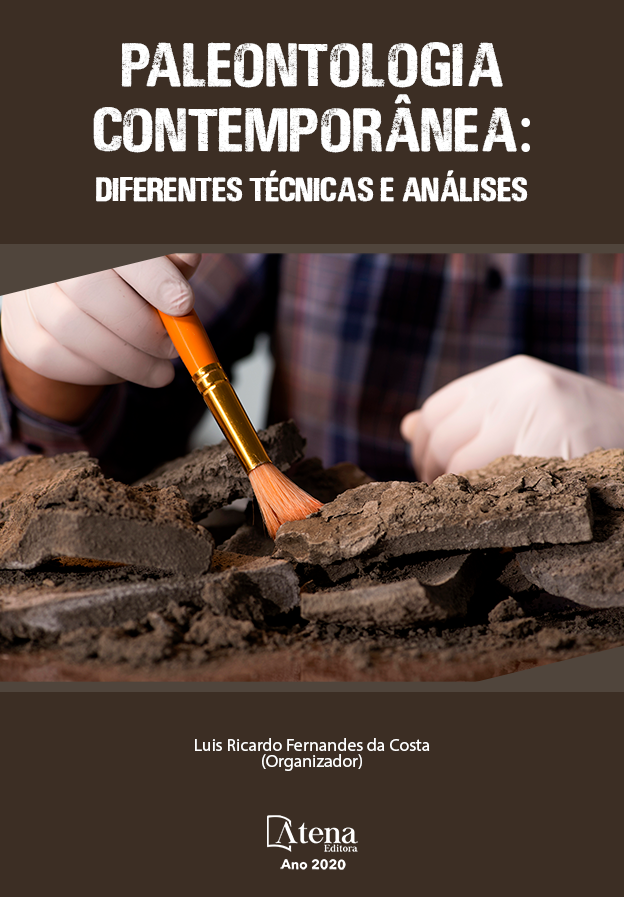
CLASSIFICAÇÃO SISTEMÁTICA DE BIVALVES FÓSSEIS DO CRETÁCEO SUPERIOR DA BACIA BAURU - FORMAÇÃO PRESIDENTE PRUDENTE, DA REGIAO DE PRESIDENTE PRUDENTE - SP
A Bacia Bauru abrange uma área aproximadamente de 370.000 km², estando presente em quatro estados brasileiros Minas Gerais, Paraná, Mato Grosso do Sul e Goiás, além de grande parte dessa área (cerca de 42%) corresponder ao estado de São Paulo. Em relação a rochas de idade cretácea, a Bacia Bauru possui a mais extensa sucessão sedimentar de idade da América do Sul, especialmente considerando o contexto sedimentar continental. O filo Molusca representa o segundo maior grupo do reino animal em termos de diversidade atual e fóssil, ao qual pertence à classe dos Bivalves, que inclui animais como as ostras, mexilhões e vieiras. Ambientes sedimentares continentais do período Cretáceo revelam afloramentos de rochas contendo moluscos bivalves, porém é de se notar que o grupo em questão é pouco estudado e necessita de mais trabalhos para um melhor entendimento de sua taxonomia, ecologia e diversidade. O presente trabalho apresenta classificação sistemática de bivalves fósseis coletados na região de Presidente Prudente, SP, em afloramento da Formação Presidente Prudente (Bacia Bauru, Cretáceo Superior).
Com base nas informações coletadas, análises laboratoriais , técnicas de preparação e estudos bibliográficos , foi possível fazer a identificação de 3 espécies taxonomicamentes distintas, sendo elas Taxodontites paulistanensis; Diplodon arrudai e Anodontites pricei.
CLASSIFICAÇÃO SISTEMÁTICA DE BIVALVES FÓSSEIS DO CRETÁCEO SUPERIOR DA BACIA BAURU - FORMAÇÃO PRESIDENTE PRUDENTE, DA REGIAO DE PRESIDENTE PRUDENTE - SP
-
DOI: 10.22533/at.ed.0092018094
-
Palavras-chave: Relações morfométricas, Taxodontites paulistanensis, Diplodon arrudai, Anodontites pricei
-
Keywords: Morphometric relationships, Taxodontites paulistanensis, Anodontites priceiDiplodon arrudai,
-
Abstract:
The Bauru Basin covers an area of approximately 370,000 km², being present in four Brazilian states Minas Gerais, Paraná, Mato Grosso do Sul and Goiás, and a large part of this area (about 42%) corresponds to the state of São Paulo. In relation to rocks of Cretaceous age the Bauru Basin has the most extensive sedimentary succession of South America, especially considering the continental sedimentary context. The phylum Mollusca represents the second largest group of the animal kingdom in terms of current and fossil diversity, to which belongs the class of Bivalves, which includes animals such as oysters, mussels and scallops. Continental sedimentary environments of the Cretaceous period reveal rock outcrops containing bivalve molluscs, but it is worth noting that the group in question is little studied and needs more research for a better understanding of its taxonomy, ecology and diversity. The present work presents the systematic classification of fossil bivalves collected in the region of Presidente Prudente, SP, in outcropping of the Presidente Prudente Formation(Bauru Basin, Upper Cretaceous).Based on the information collected, laboratory analyzes, research techniques and bibliographic studies, it was possible to identify three distinct taxonomic species, being Taxodontites paulistanensis; Diplodon arrudai; Anodontites pricei.
-
Número de páginas: 12
- Sabrina Coelho Rodrigues
- Donato Jesus Martucci Neto


